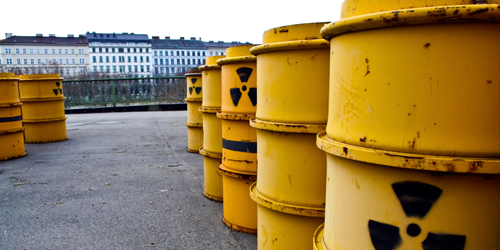Finding the Source of Illicit Nuclear Material
International authorities want to identify the origins of illicit nuclear materials, of which spent fuel from nuclear reactors is an important source. Researchers in China have now developed a set of data manipulations that—given some measurements from an unknown sample—can reliably identify the type of reactor, the level of uranium-235 enrichment, and the exposure time that the fuel experienced in the reactor [1]. Most previous techniques have been based on simulations of the effects of a reactor on nuclear material, and their accuracy was unknown. But the new diagnostics are based entirely upon experimental data.
Researchers can determine the amounts of various isotopes in an unknown sample by measuring properties such as its gamma-ray emission. To learn the degree of uranium-235 enrichment or the exposure time, the isotope amounts determined from these measurements can be plugged into empirical equations. To find out which isotopes provide the most accurate predictions and to improve the equations, Shengli Chen of Sun Yat-sen University in China and his colleagues fit the equations to experimental data from the SFCOMPO-2.0 database, which contains hundreds of samples from known reactors [2]. They also used the data to train three machine-learning models to discriminate between two reactor types that produce similar effects: the pressurized water reactor (PWR) and the boiling water reactor (BWR).
Chen and his colleagues tested the machine-learning models using a fraction of the database that was not included in the training. The best of these models correctly identified 95% of the PWR samples and 91% of the BWR samples. Overall, the researchers believe that the new data-based models provide a set of tools for identifying spent fuel that is more reliable than available methods.
–David Ehrenstein
David Ehrenstein is a Senior Editor for Physics Magazine.
References
- S. Chen et al., “Linear regression and machine learning for nuclear forensics of spent fuel from six types of nuclear reactors,” Phys. Rev. Appl. 19, 034028 (2023).
- F. Michel-Sendis et al., “SFCOMPO-2.0: An OECD NEA database of spent nuclear fuel isotopic assays, reactor design specifications, and operating data,” Ann. Nucl. Energy 110, 779 (2017).




